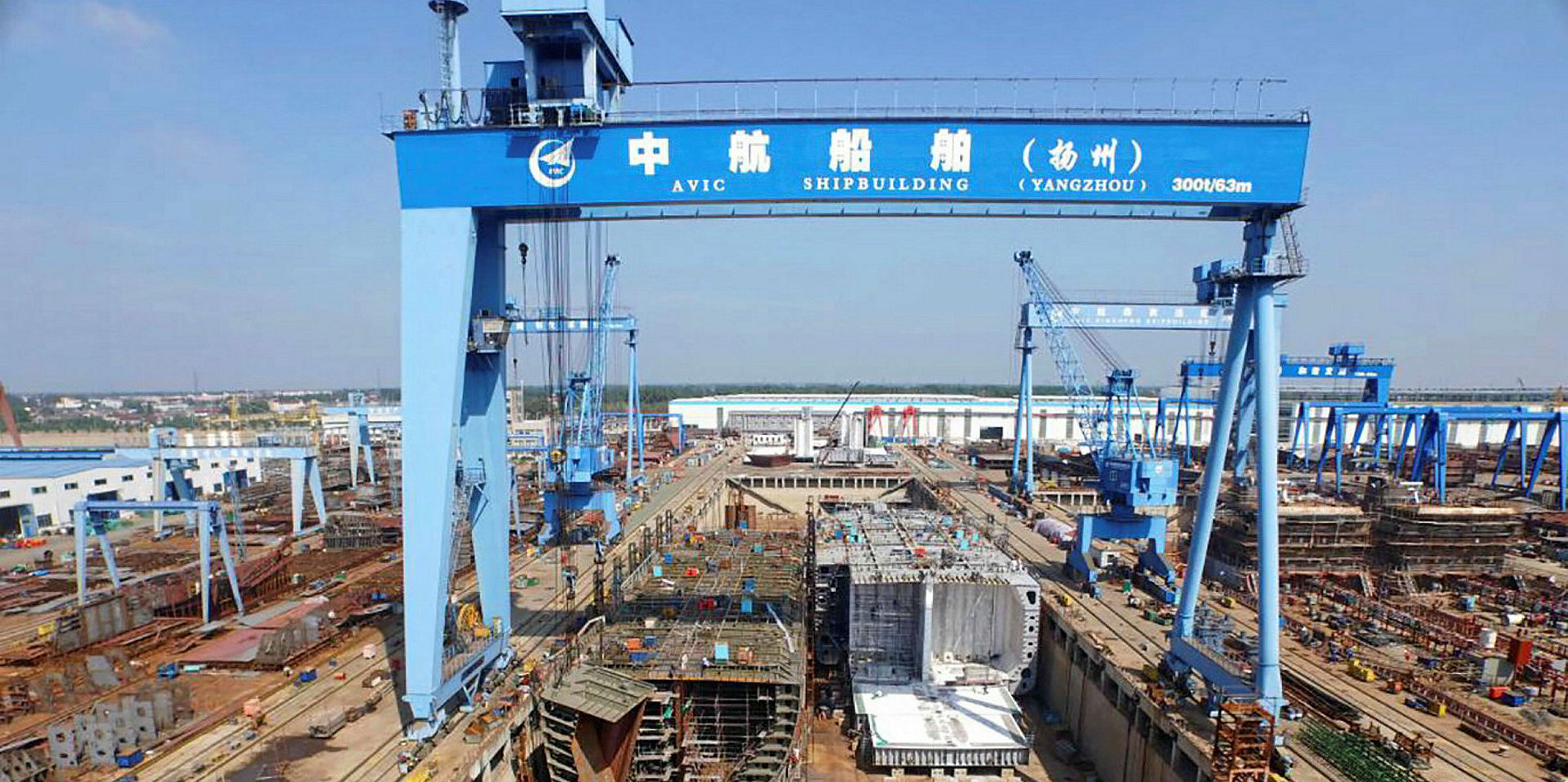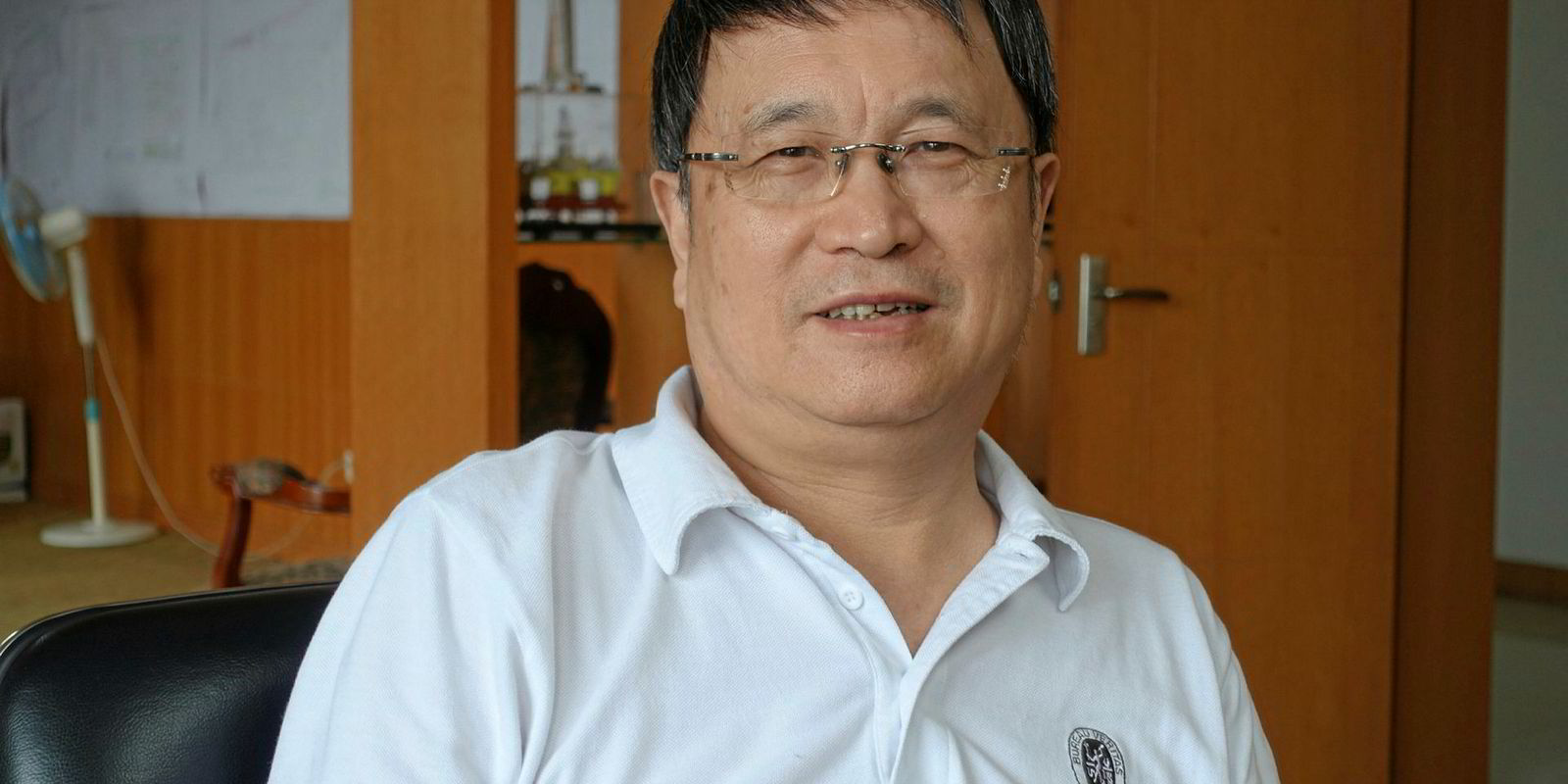Chinese government authorities are pushing for the merger of offshore yard group China Merchants Heavy Industry (CMHI) with smaller shipbuilder Avic International Ship Development.
The unpublicised plan comes not in response to financial troubles — Avic’s two yards have strong niche orderbooks — but as part of a policy to consolidate state-owned enterprises into larger internationally competitive groups, each integrating a strategic industry.
The State-owned Asset Supervision and Administration Commission, the ultimate shareholder of China’s central state-owned companies, is said to have ordered the two shipbuilding companies and their parent groups to the table in March.
CMHI shipbuilding officials told TradeWinds the discussions are being conducted at a higher level in the organisation. They expect a bigger CMHI group to involve more centralisation of marketing, commercial and engineering departments. The individual yards’ identities and operations would otherwise remain separate. Avic officials deferred to higher group officials, who were not immediately available.
A larger merger, of China’s two major state-owned groups — northern China Shipbuilding Industry Corp (CSIC) and southern China State Shipbuilding Corp (CSSC) — has been the subject of speculation for years. But the CMHI-Avic deal could close more quickly. Sources expect it to be completed next year.
CMHI parent China Merchants Group (CMG) seems certain to remain in the driver’s seat. It would retain control of its two main yards plus the former Sinotrans & CSC Jinling Shipyard, in addition to the Avic shipyards at Weihai and Dingheng.
Although the CMHI and Avic shipyard groups do not have much in common as to their product suite, they are alike in having moved on from standard tonnage.
Observers inside and outside the groups find it unlikely that they will compete on price for bulker, tanker and boxship contracts against the wider market.
Of the two main CMG-controlled yards, CMHI Shenzhen at Shekou in Guangdong province is almost exclusively devoted to offshore, especially jack-up rigs and liftboats, and, along with its sister yard, CMHI Jiangsu near Nantong in Jiangsu province, has begun to sell off the abandoned rigs it accumulated after the oil price crash.
CMHI Jiangsu also has a jack-up-heavy orderbook but is completing a semi-submersible rig, accommodation modules and offshore windfarm installation vessels. Beyond the offshore sector, it is working on a series of small cruiseships, two Valemax ore carriers for sister company Ming Wah in Hong Kong and even a prototype medium-sized LNG carrier on an unconventional design.

By the end of the year, CMHI Jiangsu plans to start building a completely new facility dedicated to small cruiseships, adjoining the present yard to the west along the Yangtze riverfront.
Avic Weihai in Shandong province was once known as a bulker builder, delivering tonnage from handy up to post-panamax, as well as small containerships. Now, it pins its hopes on ropaxes, with Sweden’s Stena RoRo as a key customer.
Avic Dingheng, up the Yangtze at Yangzhou in Jiangsu province, has built asphalt carriers and small gas carriers but presently concentrates on small tankers under 20,000 dwt, mainly for German and Scandinavian owners that trade domestically or in the environmentally demanding Baltic and North Sea.
The portfolio of the new group will include Jinling Shipyard in Nanjing, along with its satellite facility downriver at Yizheng.
Solid orderbook
Jinling, with a solid orderbook and the longest history of any of the five yards, was part of the former Sinotrans & CSC, of which CMG formally took ownership in 2017 after a two-year merger process. But Jinling has yet to be integrated operationally into CMHI.
Jinling’s building history includes ro-ros, car carriers, small containerships, bulkers up to kamsarmax and tankers up to MR2, but it is said to be likely to concentrate on the specialised side of that portfolio in future.





